INTERNACIONAL
Dogs of war: Britain’s new robots aiding Ukraine, terrorizing Russia as drones continue dominating battlefield
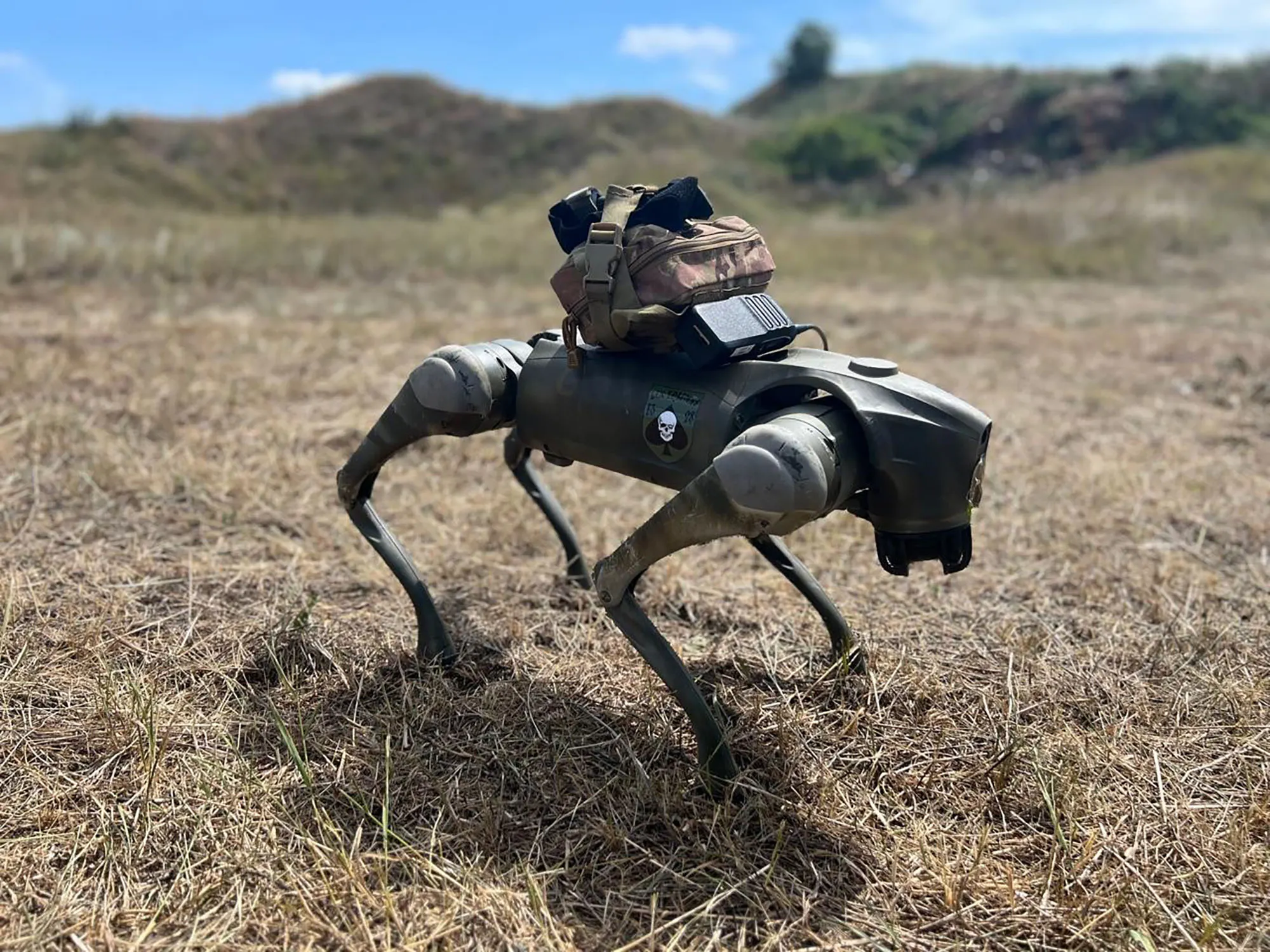
The United Kingdom has provided Ukraine with robotic «war dogs» that have started assisting troops on the battlefield and terrifying Russian troops who see them, according to reports.
«The robot dog demonstrated its capabilities in delivering a range of critical equipment, showcasing its potential as an invaluable asset to military units,» manufacturer Brit Alliance said of the units.
«The robot dog exhibited exceptional mobility and agility, crucial for traversing complex and hostile environments,» the company added. «Whether navigating through debris, climbing over obstacles, or moving stealthily across open ground, the robot dog has proven itself capable of maintaining a high level of operational effectiveness.»
The British second-generation Brit Alliance Dog (BAD2) has taken to the battlefield, utilizing remote-sensing technology and a thermal-infrared camera to navigate the tricky landscape and perform a wide range of wartime tasks, such as delivering equipment or reconnaissance.
RUSSIA LOOKS TO DOWNPLAY UKRAINE INVASION AS ‘NEW NORMAL’ WHILE PUTIN FAILS TO STOP WAR ON HOME TURF: REPORT
Ukrainian troops have taken over 30 of the dogs, which are effectively sophisticated land drones. Each unit costs around $9,000 to produce, and Brit Alliance has promised to update the units based on feedback from the Ukrainian troops.
Over 30 robot dogs developed by U.K. Brit Alliance company «perform reconnaissance missions on the front lines» in Ukraine. (East2West)
Brit Alliance believes this battlefield demonstration of the BAD2 unit will help turn it into a «cornerstone of modern military logistics.» The unit can move at just over 9 mph and move for five hours to a distance of over two miles, according to East2West.
The commander of the Kurt & Company told The Telegraph that the unit is working to make the dogs «act as a kamikaze drone against vehicles or enemy soldiers» but that if «one dog saves one soldier’s life, we will be satisfied.»
COLORADO POLICE DEPARTMENT SHOWS NEW WAYS TO USE DRONES FOR LAW ENFORCEMENT
«We will start using them en masse after the complete modernization of the robodogs to our needs,» the commander said. «The process is already underway.»
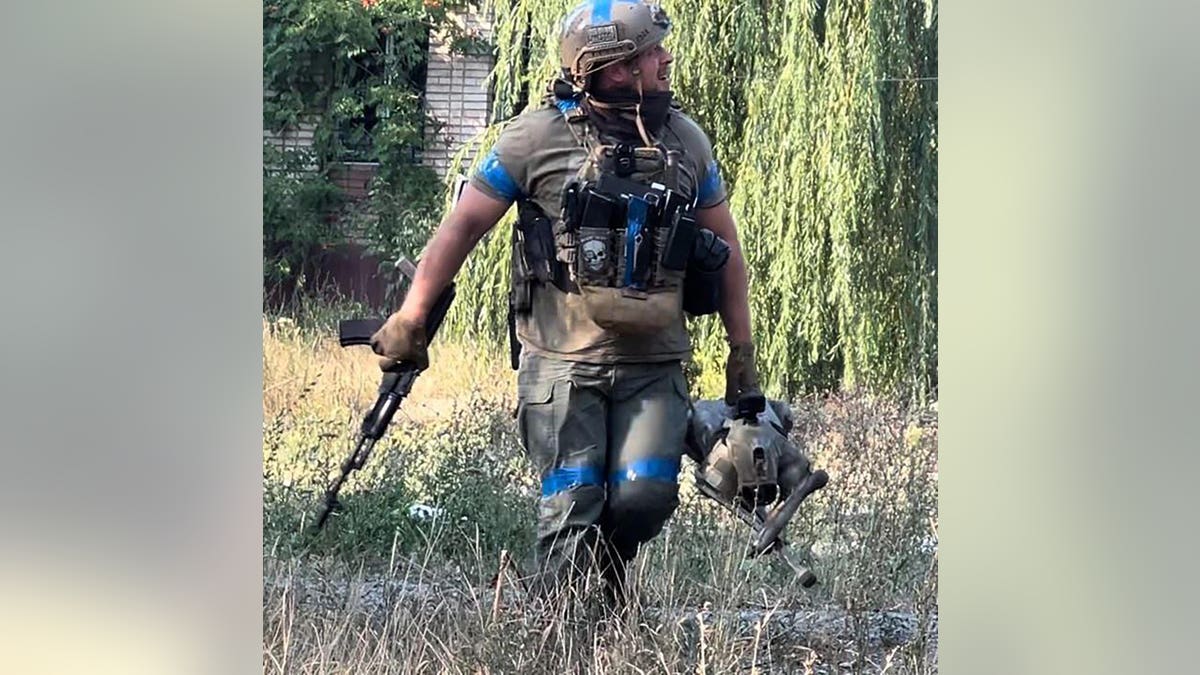
A soldier carries the BAD2 robot dog while moving through rough terrain. (East2West)
Even Russia media cannot resist discussing the strange new unit crisscrossing the battlefield, with one outlet saying «the enemy is no fool and is looking for ways to improve tactics, use new ideas and solutions.»
Drones have increasingly played a pivotal role in the conflict for Ukraine, which has found drones a means of getting better return on its investment as the conflict drags on and each side needs to prove more resourceful.

Soldiers pose with the BAD2 robot dog inside a heavily shelled building. (East2West)
Ukraine deployed the «Sea Baby» drone earlier this year to try and destroy the Crimean Bridge, causing structural damage with the naval drone that has a one-ton payload and can travel up to 62 mph, according to Ukrainian outlet EuroMaiden Press.
US, UK AND AUSTRALIA TAKE NEXT STEP IN INTEGRATING AI DEFENSE SYSTEMS
Russia has responded in kind with its own land-based drones, but those models resemble remote-controlled cars. The drone, known as Scorpion-M, also has kamikaze capabilities and has seen increased use in the Donetsk region over the summer.
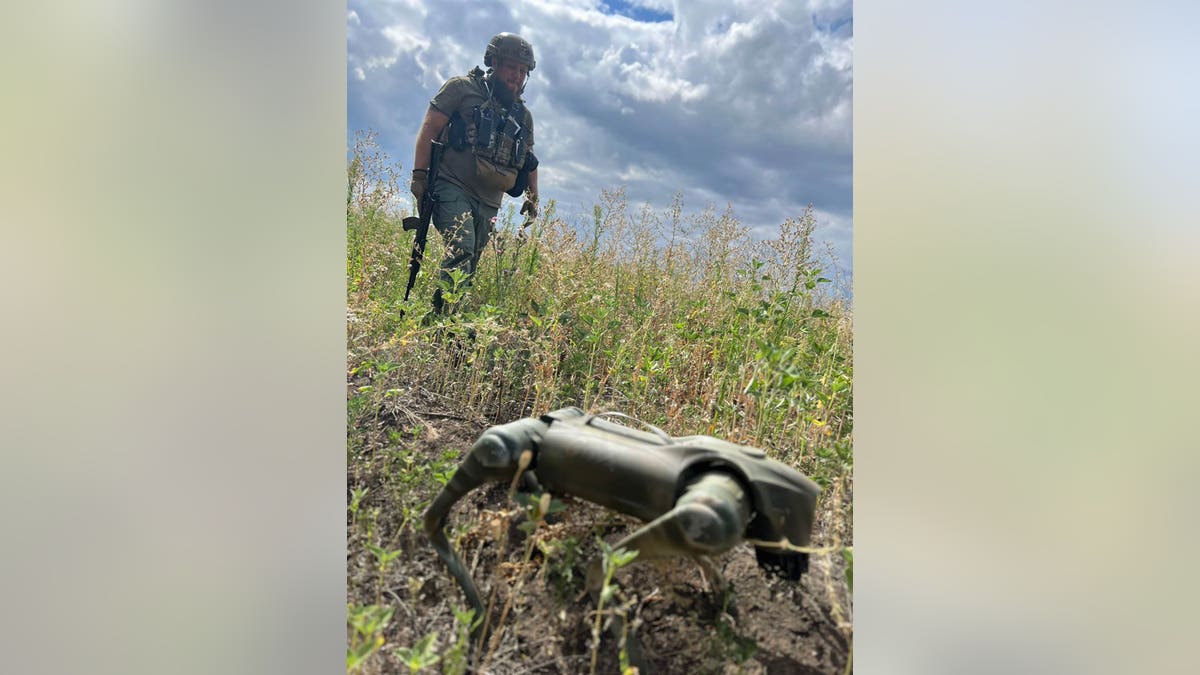
The BAD2 drone makes its way across a field while a Ukrainian soldier travels behind it. (East2West)
The Scorpion-M can carry up to 55 pounds of explosives and has been used to destroy underground hideouts and other facilities that conventional bombing has had trouble hitting. Experts touted the drone’s maneuverability, but they noted that the real advantage is the difficulty in jamming the units.
CLICK HERE TO GET THE FOX NEWS APP
In that sense, the BAD2 will have similar advantages, plus better maneuverability: Christopher Alexander, a U.S. Army vet with experience in Strategic Operations Command, previously told Fox News Digital that he found it difficult to imagine «anyone in the current state of technology or deploying these things at the company/battalion level.»
INTERNACIONAL
China opts out of international blueprint to stop AI race in weapons development

China this week chose not to sign onto an international «blueprint» agreed to by some 60 nations, including the U.S., that looked to establish guardrails when employing artificial intelligence (AI) for military use.
More than 90 nations attended the Responsible Artificial Intelligence in the Military Domain (REAIM) summit hosted in South Korea on Monday and Tuesday, though roughly a third of the attendees did not support the nonbinding proposal.
AI expert Arthur Herman, senior fellow and director of the Quantum Alliance Initiative with the Hudson Institute, told Fox News Digital that the fact some 30 nations opted out of this important development in the race to develop AI is not necessarily cause for concern, though in Beijing’s case it is likely because of its general opposition to signing multilateral agreements.
Participants are shown prior to the closing session of the REAIM summit in Seoul, South Korea, on Sept. 10, 2024. (JUNG YEON-JE/AFP via Getty Images)
MASTERING ‘THE ART OF BRAINWASHING,’ CHINA INTENSIFIES AI CENSORSHIP
«What it boils down to … is China is always wary of any kind of international agreement in which it has not been the architect or involved in creating and organizing how that agreement is going to be shaped and implemented,» he said. «I think the Chinese see all of these efforts, all of these multilateral endeavors, as ways in which to try and constrain and limit China’s ability to use AI to enhance its military edge.»
Herman explained that the summit, and the blueprint agreed to by some five dozen nations, is an attempt to safeguard the expanding technology surrounding AI by ensuring there is always «human control» over the systems in place, particularly as it relates to military and defense matters.
«The algorithms that drive defense systems and weapons systems depend a lot on how fast they can go,» he said. «[They] move quickly to gather information and data that you then can speed back to command and control so they can then make the decision.

The Guard of Honor of the Chinese People’s Liberation Army performs a flag-raising ceremony at Bayi Square to celebrate the 97th anniversary of China’s Army Day on Aug. 1, 2024, in Nanchang. (Ma Yue/VCG via Getty Images)
«The speed with which AI moves … that’s hugely important on the battlefield,» he added. «If the decision that the AI-driven system is making involves taking a human life, then you want it to be one in which it’s a human being that makes the final call about a decision of that sort.»
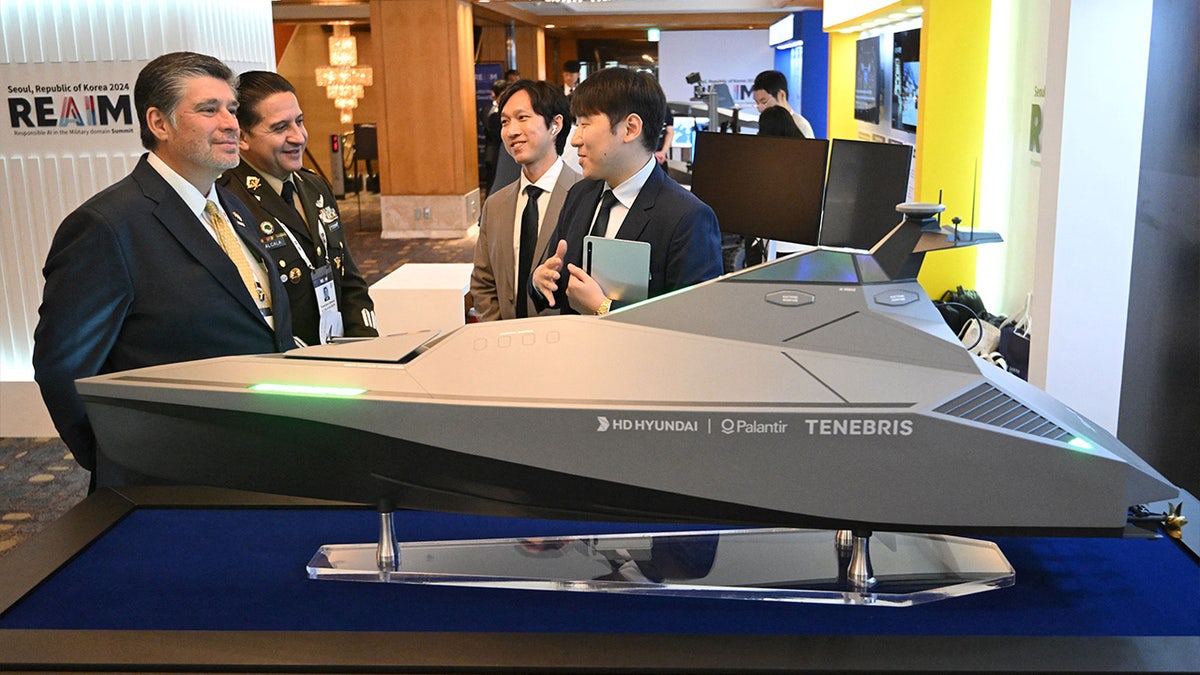
Participants are shown with the Tenebris, a medium-size unmanned surface vessel concept, on display at the REAIM summit in Seoul, South Korea, on Sept. 10, 2024. (JUNG YEON-JE/AFP via Getty Images)
Nations leading in AI development, like the U.S., have said maintaining a human element in serious battlefield decisions is hugely important to avoid mistaken casualties and prevent a machine-driven conflict.
ARMY PUSHES 2 NEW STRATEGIES TO SAFEGUARD TROOPS UNDER 500-DAY AI IMPLEMENTATION PLAN
The summit, which was co-hosted by the Netherlands, Singapore, Kenya and the United Kingdom, was the second of its kind after more than 60 nations attended the first meeting last year held in the Dutch capital.
It remains unclear why China, along with some 30 other countries, opted not to agree to the building blocks that look to set up AI safeguards, particularly after Beijing backed a similar «call to action» during the summit last year.
When pressed for details of the summit during a Wednesday press conference, Chinese Foreign Ministry spokesperson Mao Ning said that upon invitation, China sent a delegation to the summit where it «elaborated on China’s principles of AI governance.»
Mao pointed to the «Global Initiative for AI Governance» put forward by Chinese President Xi Jinping in October that she said «gives a systemic view on China’s governance propositions.»
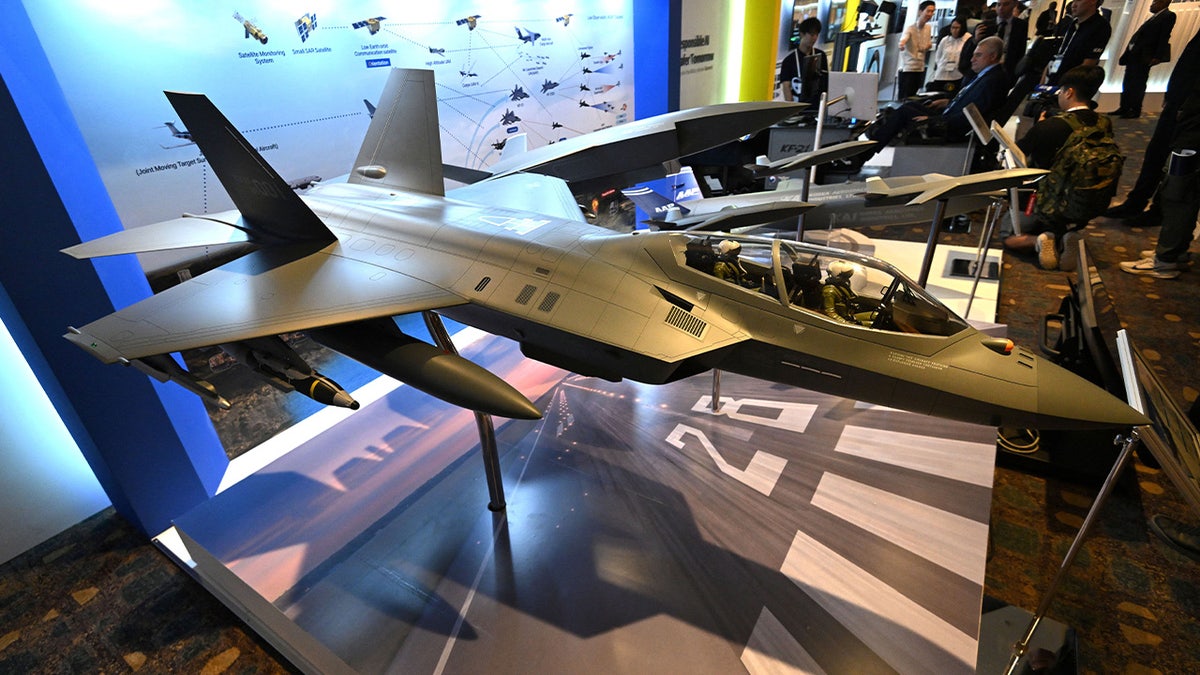
Participants look at a miniature version of the KF-21 fighter jet on display at the REAIM summit in Seoul, South Korea, on Sept. 10, 2024. (JUNG YEON-JE/AFP via Getty Images)
The spokesperson did not say why China did not back the nonbinding blueprint introduced during the REAIM summit this week but added that «China will remain open and constructive in working with other parties and deliver more tangibly for humanity through AI development.»
CLICK HERE TO GET THE FOX NEWS APP
Herman warned that while nations like the U.S. and its allies will look to establish multilateral agreements for safeguarding AI practices in military use, they are unlikely to do much in the way of deterring adversarial nations like China, Russia and Iran from developing malign technologies.
«When you’re talking about nuclear proliferation or missile technology, the best restraint is deterrence,» the AI expert explained. «You force those who are determined to push ahead with the use of AI – even to the point of basically using AI as kind of [a] automatic kill mechanism, because they see it in their interest to do so – the way in which you constrain them is by making it clear, if you develop weapons like that, we can use them against you in the same way.
«You don’t count on their sense of altruism or high ethical standards to restrain them, that’s not how that works,» Herman added.
Reuters contributed to this report.
-
POLITICA3 días ago
Aerolíneas Argentinas inicia acciones legales contra los gremios y busca echar a Pablo Biró del directorio de la empresa
-
POLITICA2 días ago
Javier Milei celebró el apoyo al veto a la reforma jubilatoria: “Le pusieron un freno a los degenerados fiscales”
-
POLITICA19 horas ago
«Si quieren expulsarnos, que lo hagan ya»: uno de los diputados que cambió su voto calentó la interna radical y contó qué les dijo Milei
-
INTERNACIONAL2 días ago
«Tercera Guerra Mundial», «Venezuela con esteroides» y «Nos vendió a China», las frases más picantes del debate entre Kamala Harris y Donald Trump
-
CHIMENTOS11 horas ago
Alarma el estado de Jorge Lanata tras su traslado: «Estado vegetativo»
-
POLITICA12 horas ago
Un dirigente sindical habló de “reventar la Plaza de Mayo” si Javier Milei veta el presupuesto universitario



























